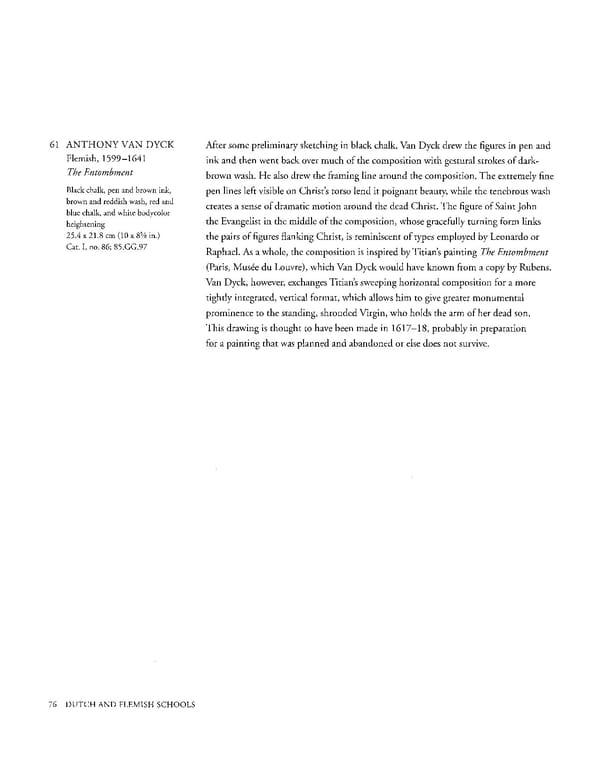61 ANTHONY VAN DYCK After some preliminary sketching in black chalk, Van Dyck drew the figures in pen and Flemish, 15991641 ink and then went back over much of the composition with gestural strokes of dark The Entombment brown wash. He also drew the framing line around the composition. The extremely fine Black chalk, pen and brown ink, pen lines left visible on Christ's torso lend it poignant beauty, while the tenebrous wash brown and reddish wash, red and creates a sense of dramatic motion around the dead Christ. The figure of Saint John blue chalk, and white bodycolor heightening the Evangelist in the middle of the composition, whose gracefully turning form links 25.4 x 21.8cm(10 x 8 5/8 in.) the pairs of figures flanking Christ, is reminiscent of types employed by Leonardo or Cat. I, no. 86; 85.GG.97 Raphael. As a whole, the composition is inspired by Titian's painting The Entombment (Paris, Musee du Louvre), which Van Dyck would have known from a copy by Rubens. Van Dyck, however, exchanges Titian's sweeping horizontal composition for a more tightly integrated, vertical format, which allows him to give greater monumental prominence to the standing, shrouded Virgin, who holds the arm of her dead son. This drawing is thought to have been made in 161718, probably in preparation for a painting that was planned and abandoned or else does not survive. 76 DUTCH AND FLEMISH SCHOOLS
 Masterpieces of the Getty Museum: Drawings Page 76 Page 78
Masterpieces of the Getty Museum: Drawings Page 76 Page 78